BC108 Transistor: Pinout, Datasheet, and Equivalent
THROUGH-HOLE TRANSISTOR-SMALL SI
Unit Price: $3.142556
Ext Price: $3.14









THROUGH-HOLE TRANSISTOR-SMALL SI
The BC108 is an NPN Transistor. This post will unlock more details about BC108. There is a huge range of Semiconductors, Capacitors, Resistors and ICs in stock. Welcome RFQ.

Analogman Sun Face BC108 Demo
BC108 Pinout

BC108 Pinout
BC108 CAD Model

BC108 Symbol
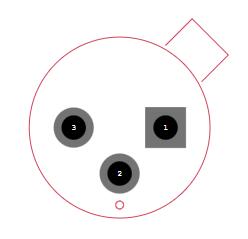
BC108 Footprint
BC108 Description
The BC108 is a semiconductor device that can be used to amplify, switch, or power signals. Because the BC108 is an NPN transistor, we must first apply a little amount of positive voltage to the transistor's base, after which only the needed amount of current flows through the base.
BC108 Feature
Bi-Polar NPN Transistor
DC Current Gain (hFE) is 900 maximum
Continuous Collector current (IC) is 200mA
Emitter Base Voltage (VBE) is 5V
Base Current(IB) is 10mA maximum
Available in TO-18 Metal Can Package
Maximum Collector-Base Voltage |Vcb|: 30 V’
Collector Dissipation: 0.3 W
Transition Frequency:150 MHz
Operating Junction Temperature Max (Tj): 175 °C
Noise Figure – 2 dB
Operating and Storage Junction Temperature Range -65 to +175 °C
Collector Capacitance 5pF
BC108 Application
LED dimmers or flashers
Switching Applications
Preamplifier for Power Amplifier
High-frequency switching
Modulator and Demodulator for RF frequency
BC108 Equivalent
BC108 Basic Working
A junction transistor is basically a sandwiched construction between two layers of N-type material of P-type material. The BC108 transistor is a general-purpose N-P-N transistor. Transistors are classified into two groups based on their construction: NPN transistors and PNP transistors, as shown below.

NPN transistor & PNP transistor
Electrons are the primary charge carriers of an NPN transistor, and they are emitted from the transistor's emitter to the PN junction. When a positive voltage is given to the base, holes are produced in the base, causing them to migrate to the emitter junction. This process thins down the depletion zone of the PN junction, allowing more electrons to flow into the collector.
How to use BC108
Transistors, unlike MOSFETs, are current-controlled devices that may be turned on or off by delivering the required base current (for BC180 transistor it is 2mA). The BC550 is an NPN transistor, which means it will remain open while no current is provided to its base, but will flip on when a base voltage is applied. The following simulated circuit shows how this transistor operates when the base current is applied and when the base current is not applied.
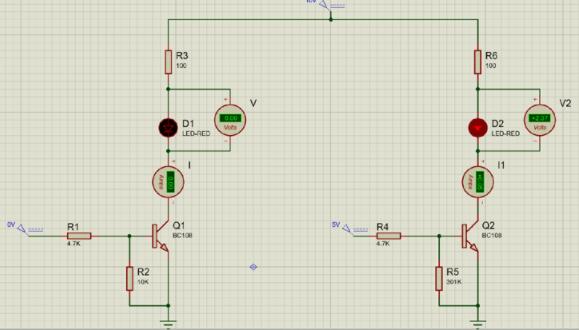
BC108 Application Circuit
When we switch on the transistor by giving the requisite current to its base, it will stay on until the voltage at the transistor's base approaches zero. The transistor's base cannot be left floating because this could cause false triggering, which could cause problems in the circuit. To remedy this problem, we must employ pulldown resistors; for example, in the example above, a 10K resistor is used to pull down the transistor's base.
Parts with Similar Specs
Specifications
- TypeParameter
- Factory Lead Time6 Weeks
- Mounting Type
The "Mounting Type" in electronic components refers to the method used to attach or connect a component to a circuit board or other substrate, such as through-hole, surface-mount, or panel mount.
Through Hole - Package / Case
refers to the protective housing that encases an electronic component, providing mechanical support, electrical connections, and thermal management.
TO-206AA, TO-18-3 Metal Can - Surface Mount
having leads that are designed to be soldered on the side of a circuit board that the body of the component is mounted on.
NO - Transistor Element Material
The "Transistor Element Material" parameter in electronic components refers to the material used to construct the transistor within the component. Transistors are semiconductor devices that amplify or switch electronic signals and are a fundamental building block in electronic circuits. The material used for the transistor element can significantly impact the performance and characteristics of the component. Common materials used for transistor elements include silicon, germanium, and gallium arsenide, each with its own unique properties and suitability for different applications. The choice of transistor element material is crucial in designing electronic components to meet specific performance requirements such as speed, power efficiency, and temperature tolerance.
SILICON - Current-Collector (Ic) (Max)200mA
- Number of Elements1
- Operating Temperature
The operating temperature is the range of ambient temperature within which a power supply, or any other electrical equipment, operate in. This ranges from a minimum operating temperature, to a peak or maximum operating temperature, outside which, the power supply may fail.
-65°C~200°C TJ - Packaging
Semiconductor package is a carrier / shell used to contain and cover one or more semiconductor components or integrated circuits. The material of the shell can be metal, plastic, glass or ceramic.
Bulk - Part Status
Parts can have many statuses as they progress through the configuration, analysis, review, and approval stages.
Active - Moisture Sensitivity Level (MSL)
Moisture Sensitivity Level (MSL) is a standardized rating that indicates the susceptibility of electronic components, particularly semiconductors, to moisture-induced damage during storage and the soldering process, defining the allowable exposure time to ambient conditions before they require special handling or baking to prevent failures
Not Applicable - Number of Terminations3
- Terminal Position
In electronic components, the term "Terminal Position" refers to the physical location of the connection points on the component where external electrical connections can be made. These connection points, known as terminals, are typically used to attach wires, leads, or other components to the main body of the electronic component. The terminal position is important for ensuring proper connectivity and functionality of the component within a circuit. It is often specified in technical datasheets or component specifications to help designers and engineers understand how to properly integrate the component into their circuit designs.
BOTTOM - Terminal Form
Occurring at or forming the end of a series, succession, or the like; closing; concluding.
WIRE - Peak Reflow Temperature (Cel)
Peak Reflow Temperature (Cel) is a parameter that specifies the maximum temperature at which an electronic component can be exposed during the reflow soldering process. Reflow soldering is a common method used to attach electronic components to a circuit board. The Peak Reflow Temperature is crucial because it ensures that the component is not damaged or degraded during the soldering process. Exceeding the specified Peak Reflow Temperature can lead to issues such as component failure, reduced performance, or even permanent damage to the component. It is important for manufacturers and assemblers to adhere to the recommended Peak Reflow Temperature to ensure the reliability and functionality of the electronic components.
NOT SPECIFIED - Time@Peak Reflow Temperature-Max (s)
Time@Peak Reflow Temperature-Max (s) refers to the maximum duration that an electronic component can be exposed to the peak reflow temperature during the soldering process, which is crucial for ensuring reliable solder joint formation without damaging the component.
NOT SPECIFIED - JESD-30 Code
JESD-30 Code refers to a standardized descriptive designation system established by JEDEC for semiconductor-device packages. This system provides a systematic method for generating designators that convey essential information about the package's physical characteristics, such as size and shape, which aids in component identification and selection. By using JESD-30 codes, manufacturers and engineers can ensure consistency and clarity in the specification of semiconductor packages across various applications and industries.
O-MBCY-W3 - Configuration
The parameter "Configuration" in electronic components refers to the specific arrangement or setup of the components within a circuit or system. It encompasses how individual elements are interconnected and their physical layout. Configuration can affect the functionality, performance, and efficiency of the electronic system, and may influence factors such as signal flow, impedance, and power distribution. Understanding the configuration is essential for design, troubleshooting, and optimizing electronic devices.
SINGLE - Power - Max
Power - Max is a parameter that specifies the maximum amount of power that an electronic component can handle without being damaged. It is typically measured in watts and indicates the upper limit of power that can be safely supplied to the component. Exceeding the maximum power rating can lead to overheating, malfunction, or permanent damage to the component. It is important to consider the power-max rating when designing circuits or systems to ensure proper operation and longevity of the electronic components.
600mW - Transistor Application
In the context of electronic components, the parameter "Transistor Application" refers to the specific purpose or function for which a transistor is designed and used. Transistors are semiconductor devices that can amplify or switch electronic signals and are commonly used in various electronic circuits. The application of a transistor can vary widely depending on its design and characteristics, such as whether it is intended for audio amplification, digital logic, power control, or radio frequency applications. Understanding the transistor application is important for selecting the right type of transistor for a particular circuit or system to ensure optimal performance and functionality.
AMPLIFIER - Polarity/Channel Type
In electronic components, the parameter "Polarity/Channel Type" refers to the characteristic that determines the direction of current flow or the type of signal that can be accommodated by the component. For components like diodes and transistors, polarity indicates the direction in which current can flow through the component, such as forward bias or reverse bias for diodes. For components like MOSFETs or JFETs, the channel type refers to whether the component is an N-channel or P-channel device, which determines the type of charge carriers that carry current through the component. Understanding the polarity or channel type of a component is crucial for proper circuit design and ensuring that the component is connected correctly to achieve the desired functionality.
NPN - Transistor Type
Transistor type refers to the classification of transistors based on their operation and construction. The two primary types are bipolar junction transistors (BJTs) and field-effect transistors (FETs). BJTs use current to control the flow of current, while FETs utilize voltage to control current flow. Each type has its own subtypes, such as NPN and PNP for BJTs, and MOSFETs and JFETs for FETs, impacting their applications and characteristics in electronic circuits.
NPN - DC Current Gain (hFE) (Min) @ Ic, Vce
The parameter "DC Current Gain (hFE) (Min) @ Ic, Vce" in electronic components refers to the minimum value of the DC current gain, denoted as hFE, under specific operating conditions of collector current (Ic) and collector-emitter voltage (Vce). The DC current gain hFE represents the ratio of the collector current to the base current in a bipolar junction transistor (BJT), indicating the amplification capability of the transistor. The minimum hFE value at a given Ic and Vce helps determine the transistor's performance and efficiency in amplifying signals within a circuit. Designers use this parameter to ensure proper transistor selection and performance in various electronic applications.
200 @ 2mA 5V - Current - Collector Cutoff (Max)
The parameter "Current - Collector Cutoff (Max)" refers to the maximum current at which a transistor or other electronic component will cease to conduct current between the collector and emitter terminals. This parameter is important in determining the maximum current that can flow through the component when it is in the cutoff state. Exceeding this maximum cutoff current can lead to malfunction or damage of the component. It is typically specified in the component's datasheet and is crucial for proper circuit design and operation.
15nA ICBO - Vce Saturation (Max) @ Ib, Ic
The parameter "Vce Saturation (Max) @ Ib, Ic" in electronic components refers to the maximum voltage drop across the collector-emitter junction when the transistor is in saturation mode. This parameter is specified at a certain base current (Ib) and collector current (Ic) levels. It indicates the minimum voltage required to keep the transistor fully conducting in saturation mode, ensuring that the transistor operates efficiently and does not enter the cutoff region. Designers use this parameter to ensure proper transistor operation and to prevent overheating or damage to the component.
600mV @ 5mA, 100mA - Voltage - Collector Emitter Breakdown (Max)
Voltage - Collector Emitter Breakdown (Max) is a parameter that specifies the maximum voltage that can be applied between the collector and emitter terminals of a transistor or other semiconductor device before it breaks down and allows excessive current to flow. This parameter is crucial for ensuring the safe and reliable operation of the component within its specified limits. Exceeding the maximum breakdown voltage can lead to permanent damage or failure of the device. Designers and engineers must carefully consider this parameter when selecting components for their circuits to prevent potential issues and ensure proper functionality.
25V - Transition Frequency
Transition Frequency in electronic components refers to the frequency at which a device can transition from one state to another, typically defining the upper limit of its operating frequency. It is a critical parameter in determining the speed and performance of active components like transistors and integrated circuits. This frequency is influenced by factors such as capacitance, resistance, and the inherent characteristics of the materials used in the component's construction. Understanding transition frequency is essential for optimizing circuit designs and ensuring reliable signal processing in various applications.
150MHz - Frequency - Transition
The parameter "Frequency - Transition" in electronic components refers to the maximum frequency at which a signal transition can occur within the component. It is a crucial specification for digital circuits as it determines the speed at which data can be processed and transmitted. A higher frequency transition allows for faster operation and better performance of the electronic component. It is typically measured in hertz (Hz) or megahertz (MHz) and is specified by the manufacturer to ensure proper functioning of the component within a given frequency range.
150MHz - RoHS Status
RoHS means “Restriction of Certain Hazardous Substances” in the “Hazardous Substances Directive” in electrical and electronic equipment.
ROHS3 Compliant
Datasheet PDF
- Datasheets :
- Environmental Information :
What condition to operate BC108?
To use this transistor as an amplifier, you need to get the gain value from the datasheet of the device. The gain value can differ depending upon the manufacturer, so it's highly recommended to check out the datasheet of the specific device before you do the calculation. The maximum collector current of this transistor is rated at 200mA with a maximum emitter-base voltage of 5V. This transistor has a collector-emitter voltage of 30V and a collector base voltage of 5V. This transistor can operate with 150*C.
What happen to BC108 when this transistor is in biased condition?
When this transistor is in biased condition, then it can allow a maximum current of 200mA across CE(Collector-Emitter) Junction, this state of the transistor is called the saturation state and driving a load that consumes more current than 200mA may damage the device in this condition. As you already may know, a transistor is a current-controlled device so when the base current is removed, the transistor becomes fully off, in this stage the transistor is working in its Cut-off Region and the Base Emitter voltage could be around 660mV.
What is BC108?
The BC108 is a semiconductor device that can be used to amplify, switch, or power signals. Because the BC108 is an NPN transistor, we must first apply a little amount of positive voltage to the transistor's base, after which only the needed amount of current flows through the base.
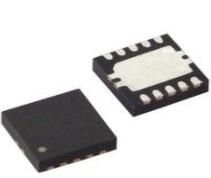 TPS40304DRCR Synchronous Buck Controller: Datasheet, Circuit, Pinout
TPS40304DRCR Synchronous Buck Controller: Datasheet, Circuit, Pinout23 March 2022514
 2N3772 NPN Silicon Transistor: 2N3772 vs. 2N3055, 2N3772 Equivalent, Datasheet PDF
2N3772 NPN Silicon Transistor: 2N3772 vs. 2N3055, 2N3772 Equivalent, Datasheet PDF20 January 20224693
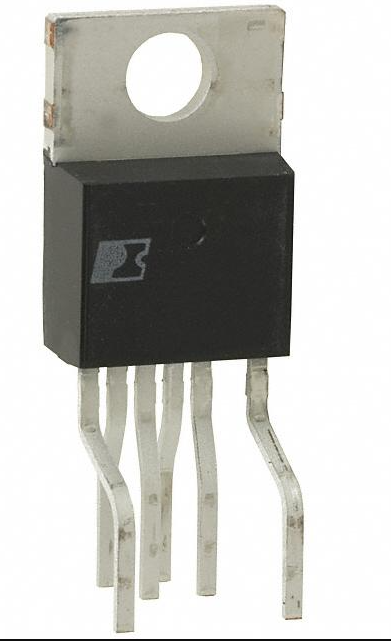 TOP249YN: Overview, Applications, and Datasheet
TOP249YN: Overview, Applications, and Datasheet27 November 20231866
 FT10001 Reset Timer: Datasheet, Pinout, Circuit
FT10001 Reset Timer: Datasheet, Pinout, Circuit27 July 20211005
![OPA2134 VS TL072[Video]: What are the differences between them?](https://res.utmel.com/Images/Article/033d2d98-5d7e-40f2-9fc3-3620ad4995f8.png) OPA2134 VS TL072[Video]: What are the differences between them?
OPA2134 VS TL072[Video]: What are the differences between them?14 April 20226661
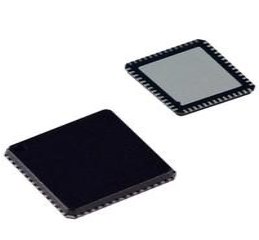 AD9959 Synthesizer: Datasheet, Pinout and Applications
AD9959 Synthesizer: Datasheet, Pinout and Applications23 August 20212141
 43025-0400 Dual Row 4 Circuits UL 94V-0 Low-Halogen: Datasheet, Equivalents, and Drawing
43025-0400 Dual Row 4 Circuits UL 94V-0 Low-Halogen: Datasheet, Equivalents, and Drawing12 February 20222012
 ATMEGA32U4-AU Microcontroller: Schematic, Pinout, and Datasheet
ATMEGA32U4-AU Microcontroller: Schematic, Pinout, and Datasheet09 February 20226794
 Basic Understanding of Attenuators
Basic Understanding of Attenuators15 September 202016213
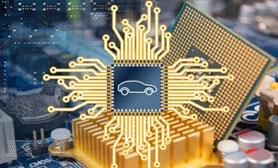 What is 3D XPoint?
What is 3D XPoint?09 November 20213997
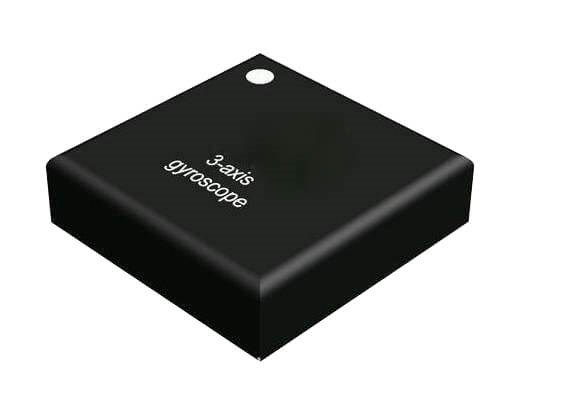 What is a Gyroscope Sensor?
What is a Gyroscope Sensor?11 September 202016947
 Introduction To Different Types Of Relays
Introduction To Different Types Of Relays10 November 202010771
 Introduction to DDIC (Display Driver IC)
Introduction to DDIC (Display Driver IC)17 February 202224487
 What is speaker?
What is speaker?08 October 20216220
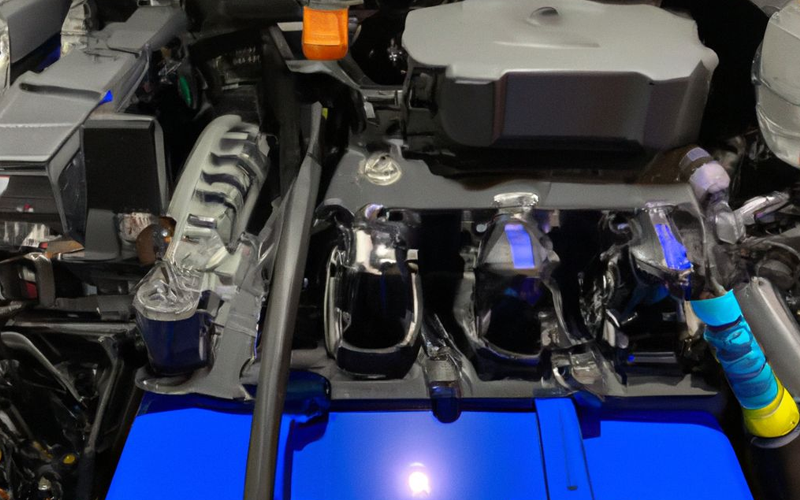 Hybrid Sources Powered Electric Vehicles - Part 1
Hybrid Sources Powered Electric Vehicles - Part 108 March 20231744
 The World's Top 10 Innovative LED Drivers
The World's Top 10 Innovative LED Drivers12 February 20223474
Central Semiconductor Corp
In Stock: 2304
Minimum: 1 Multiples: 1
Qty
Unit Price
Ext Price
1
$3.142556
$3.14
10
$2.964675
$29.65
100
$2.796864
$279.69
500
$2.638551
$1,319.28
1000
$2.489199
$2,489.20
Not the price you want? Send RFQ Now and we'll contact you ASAP.
Inquire for More Quantity

